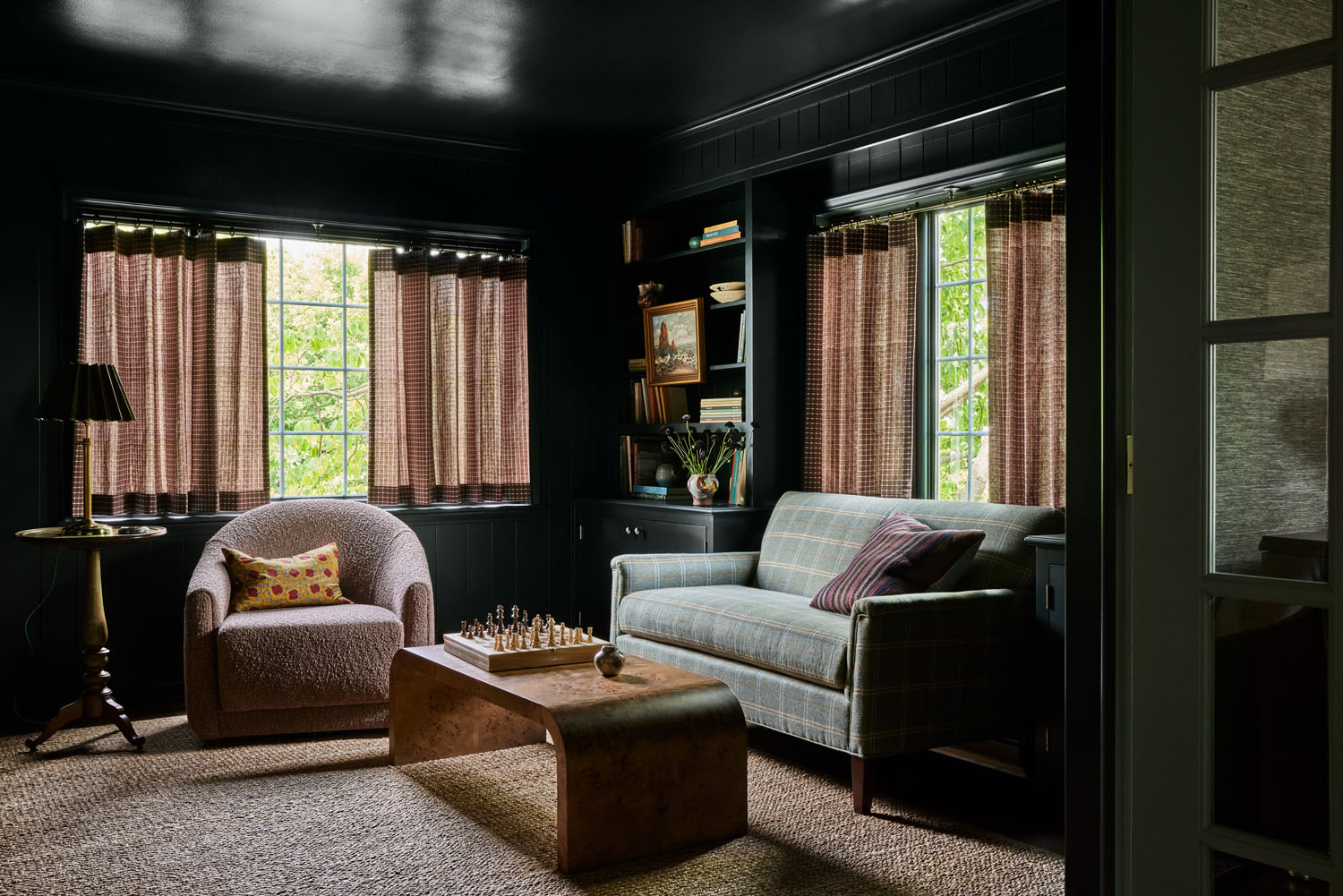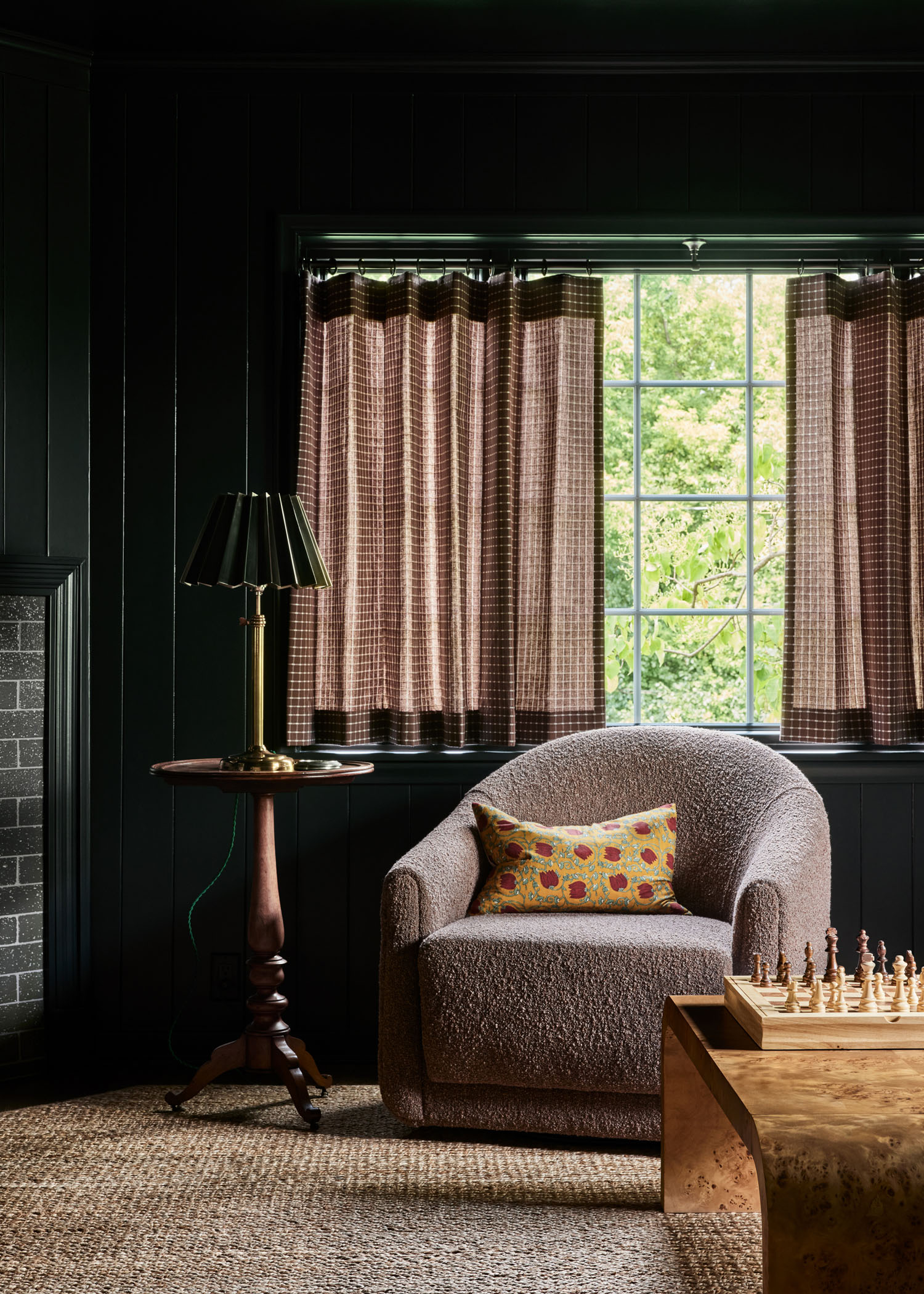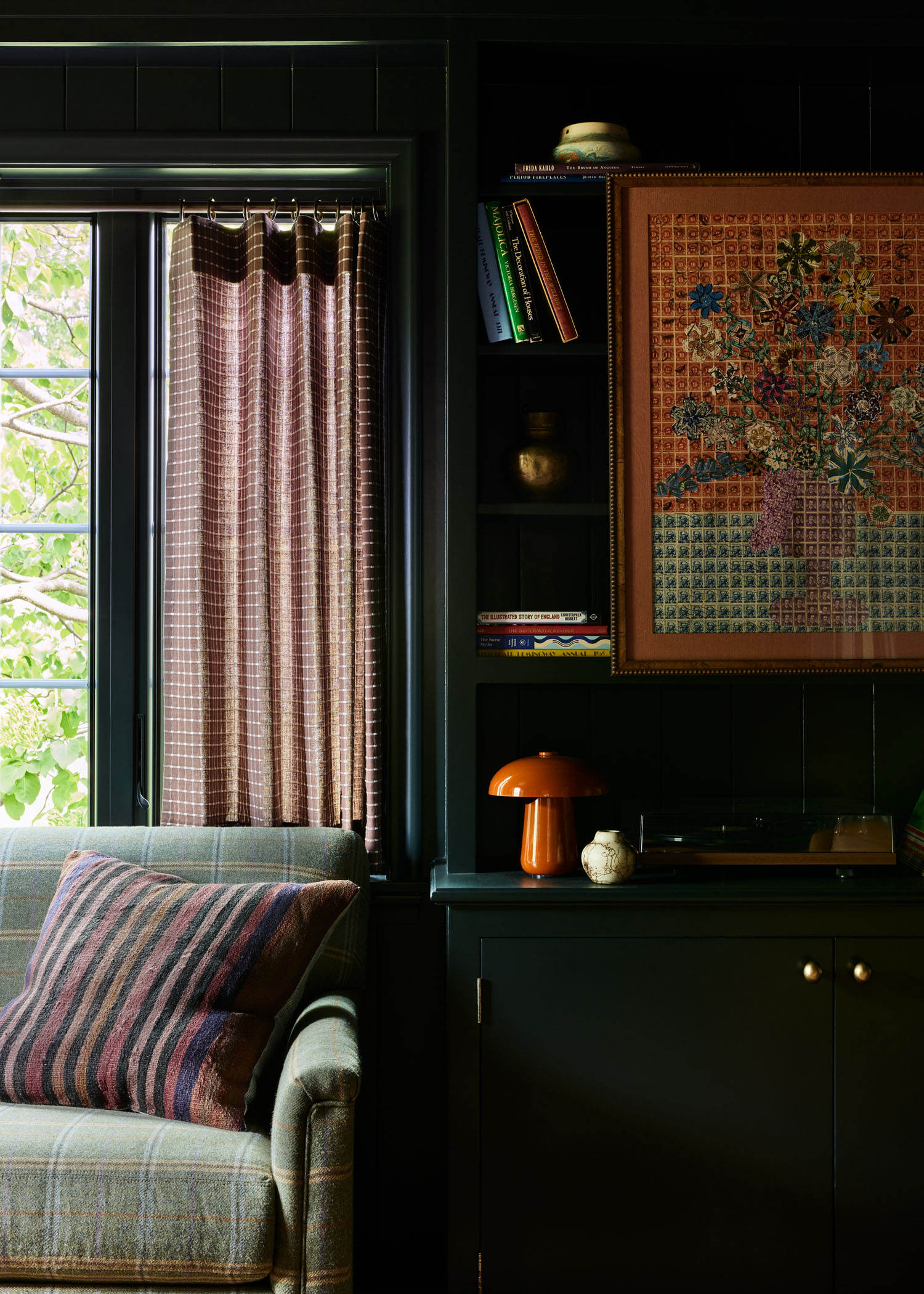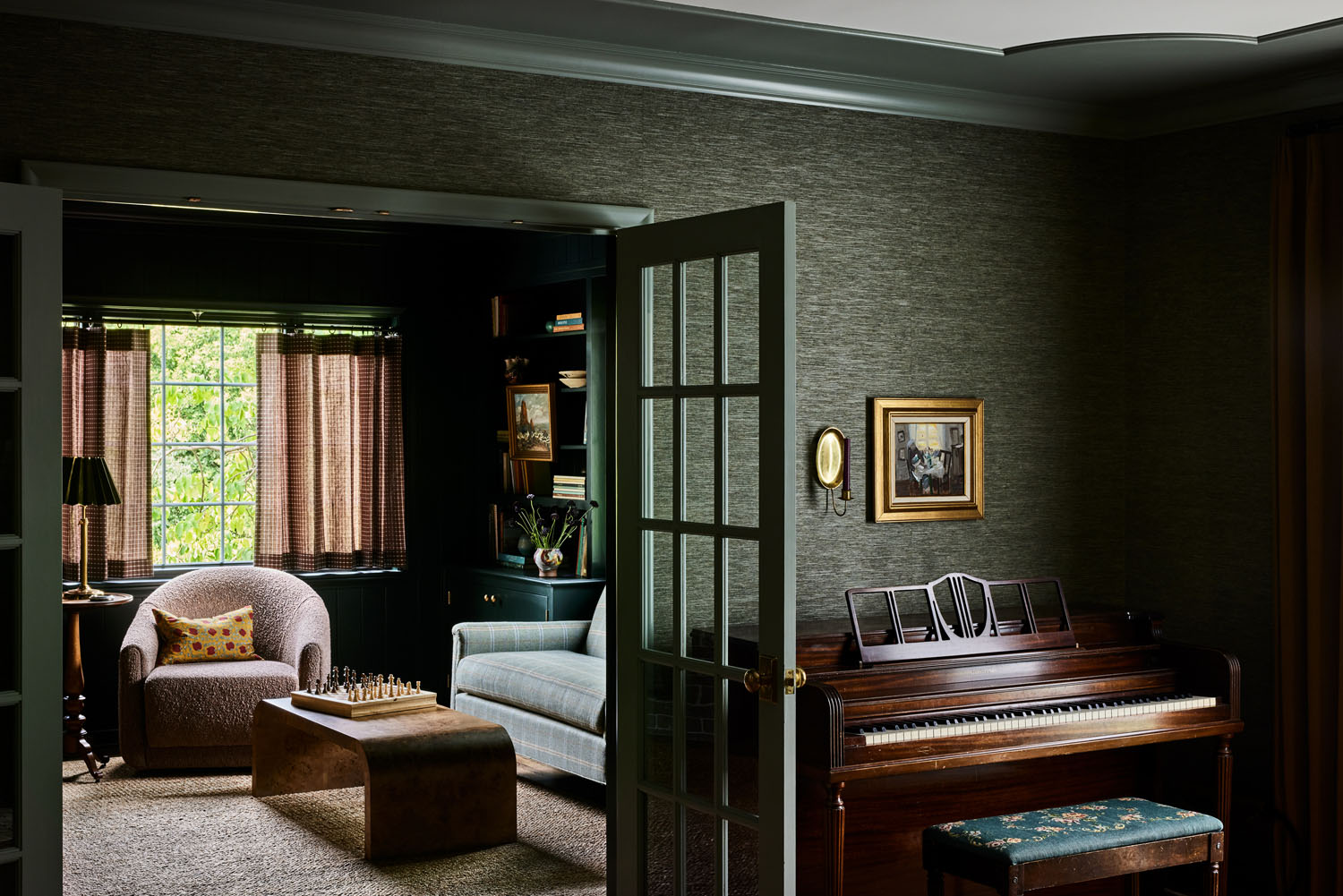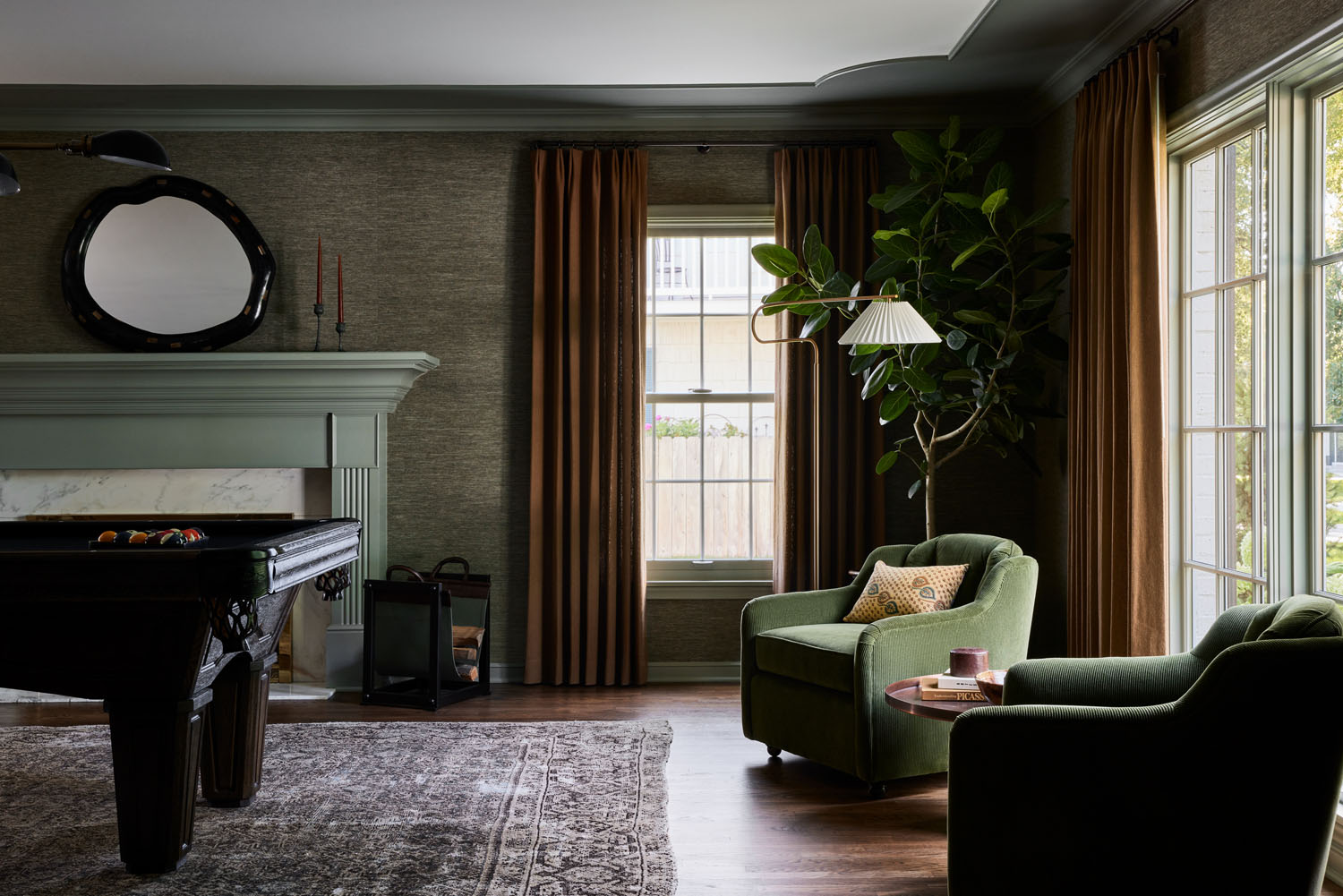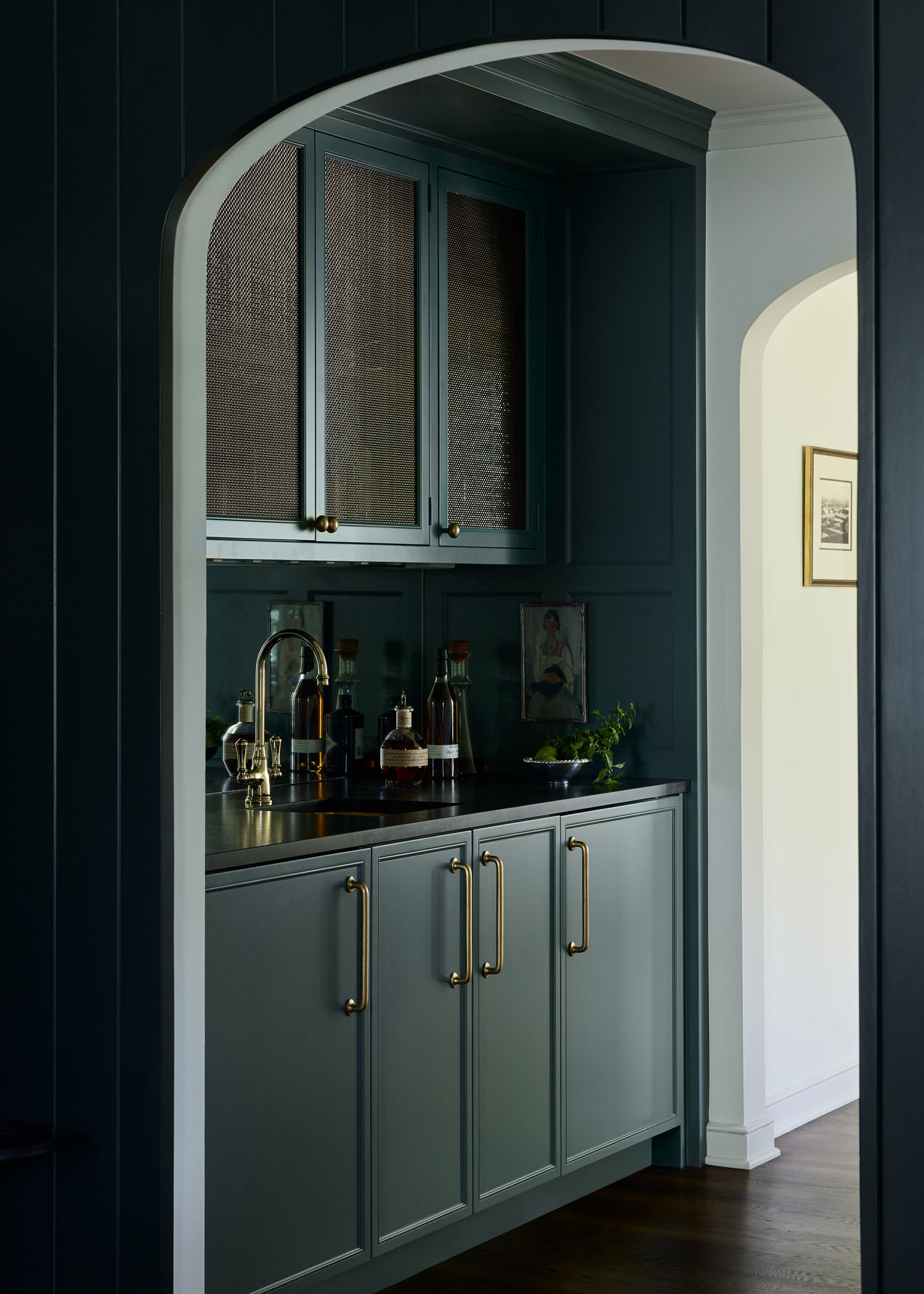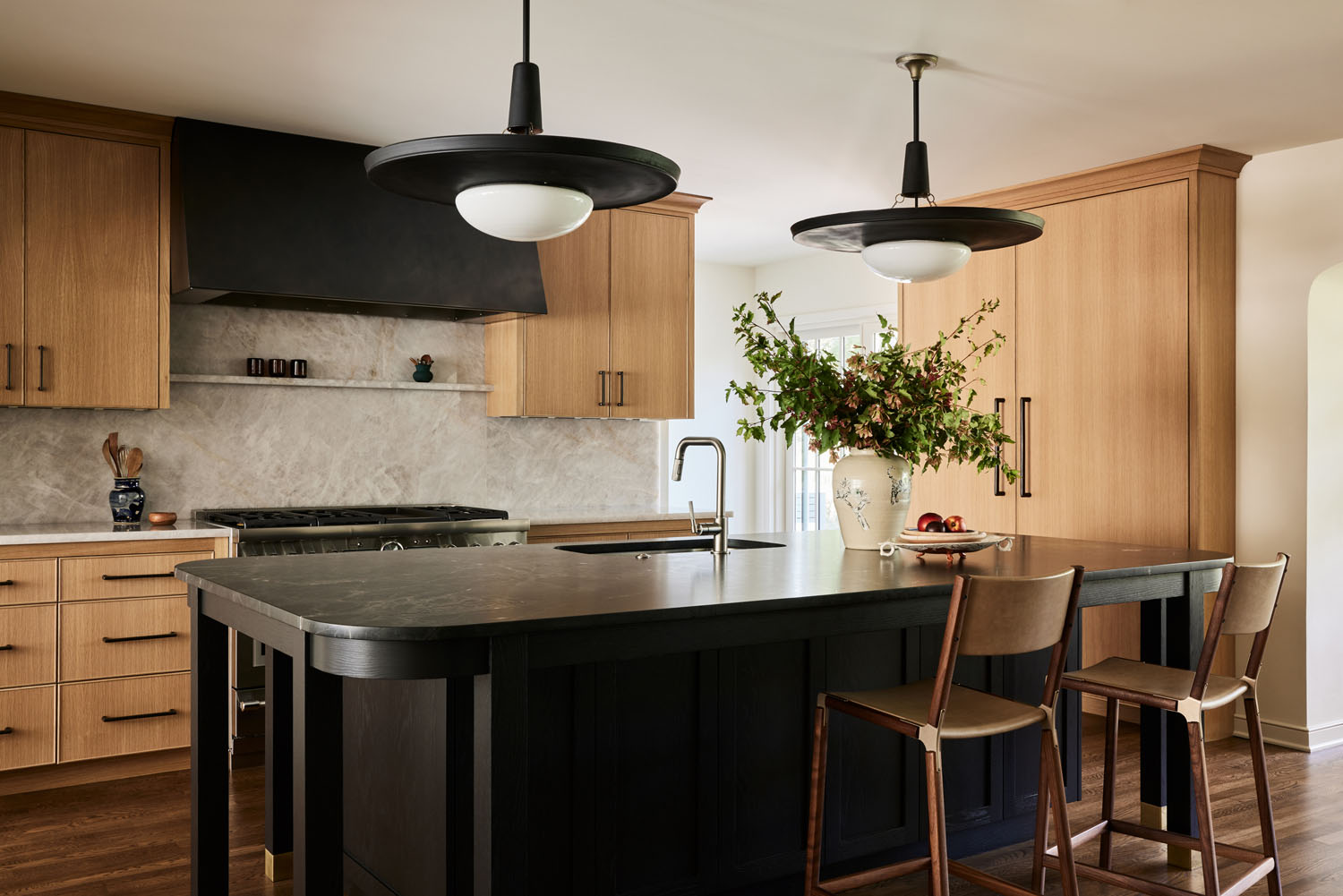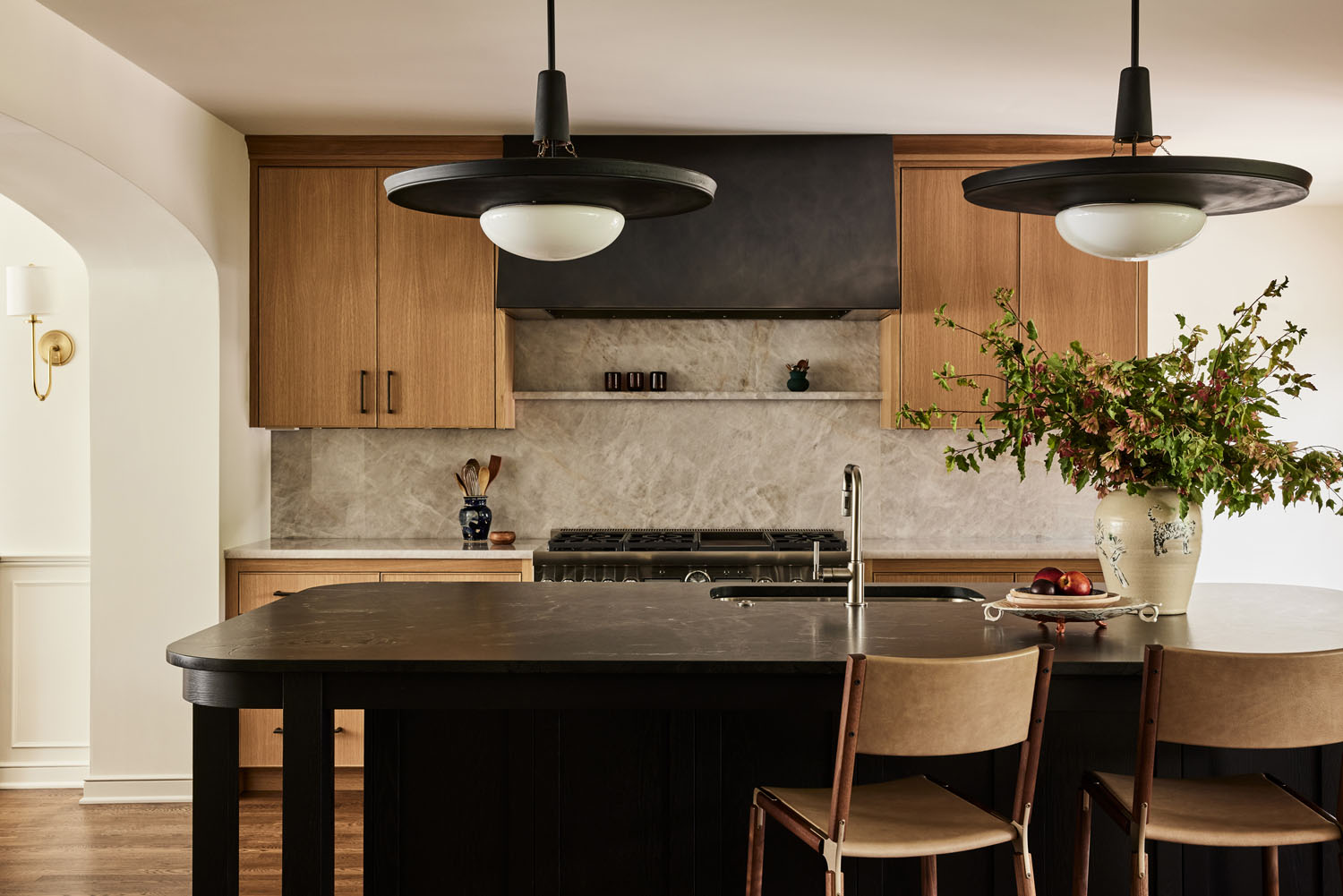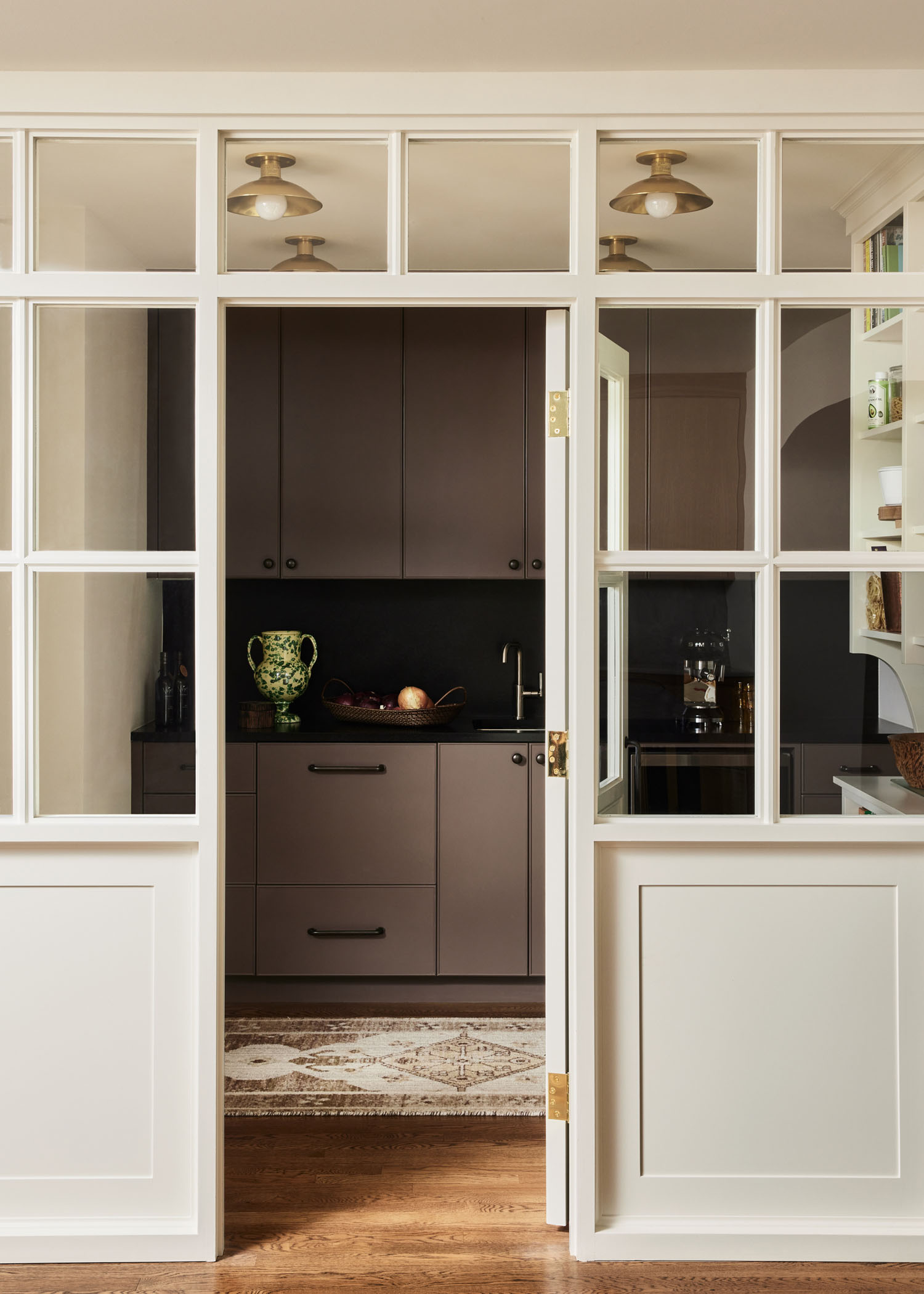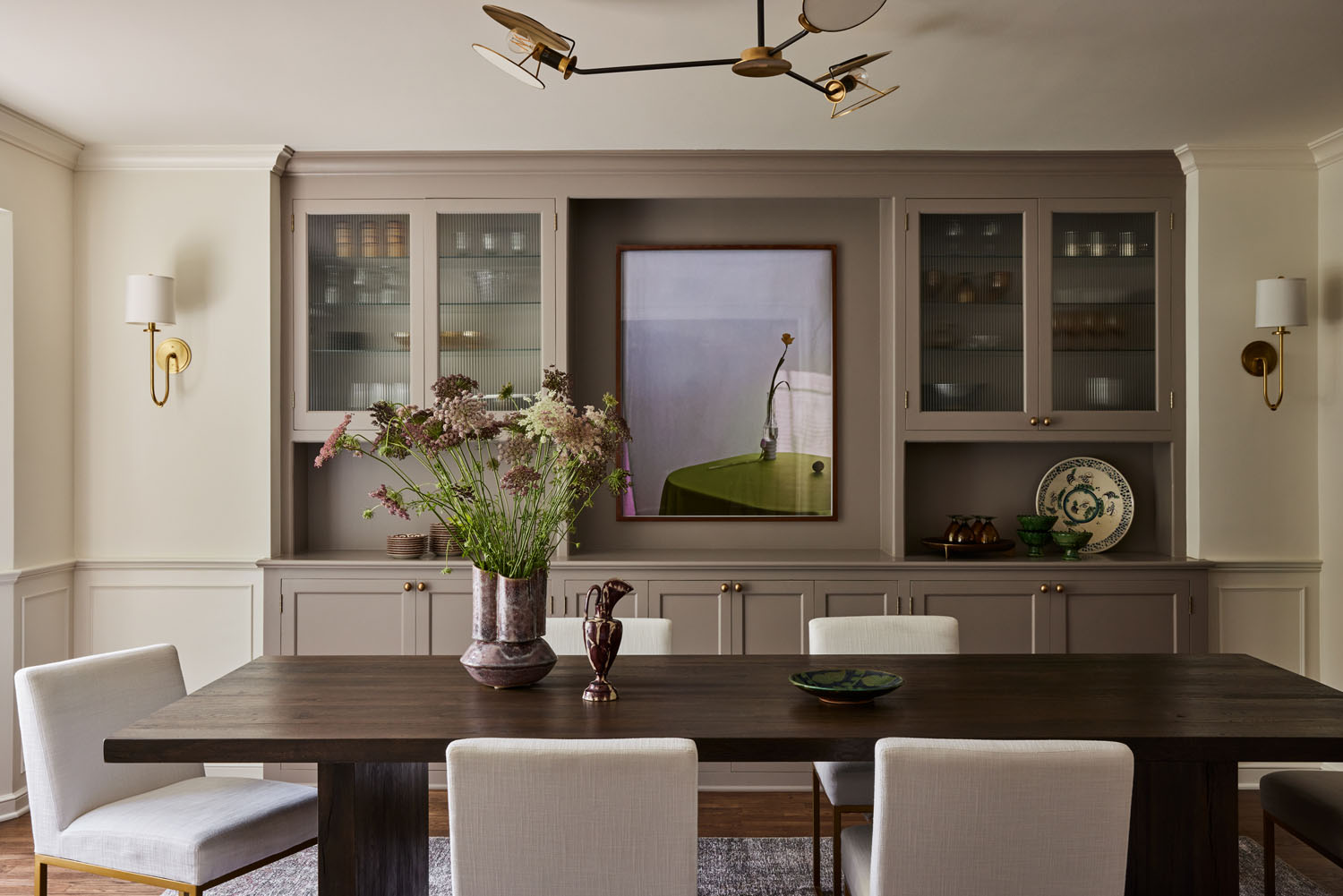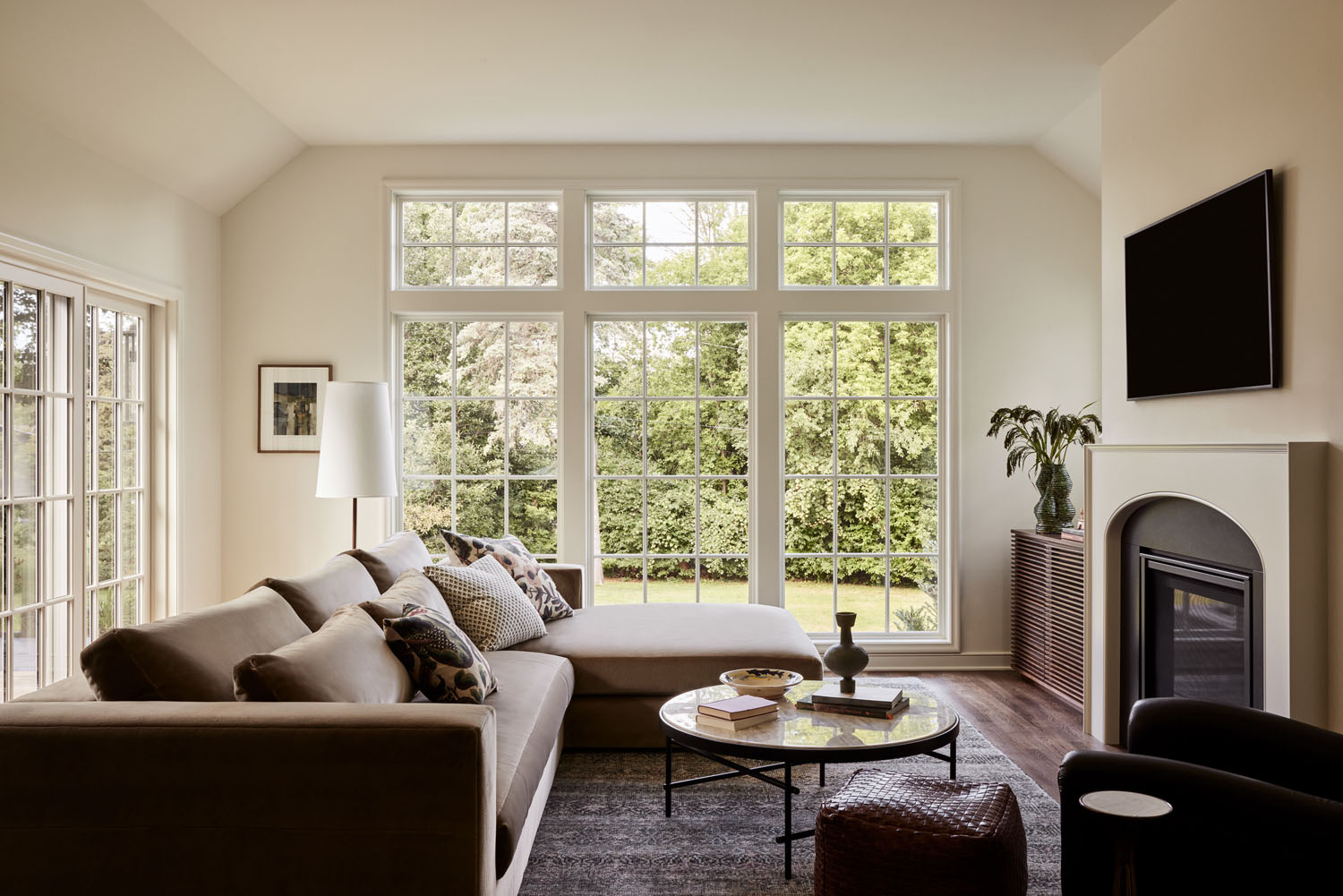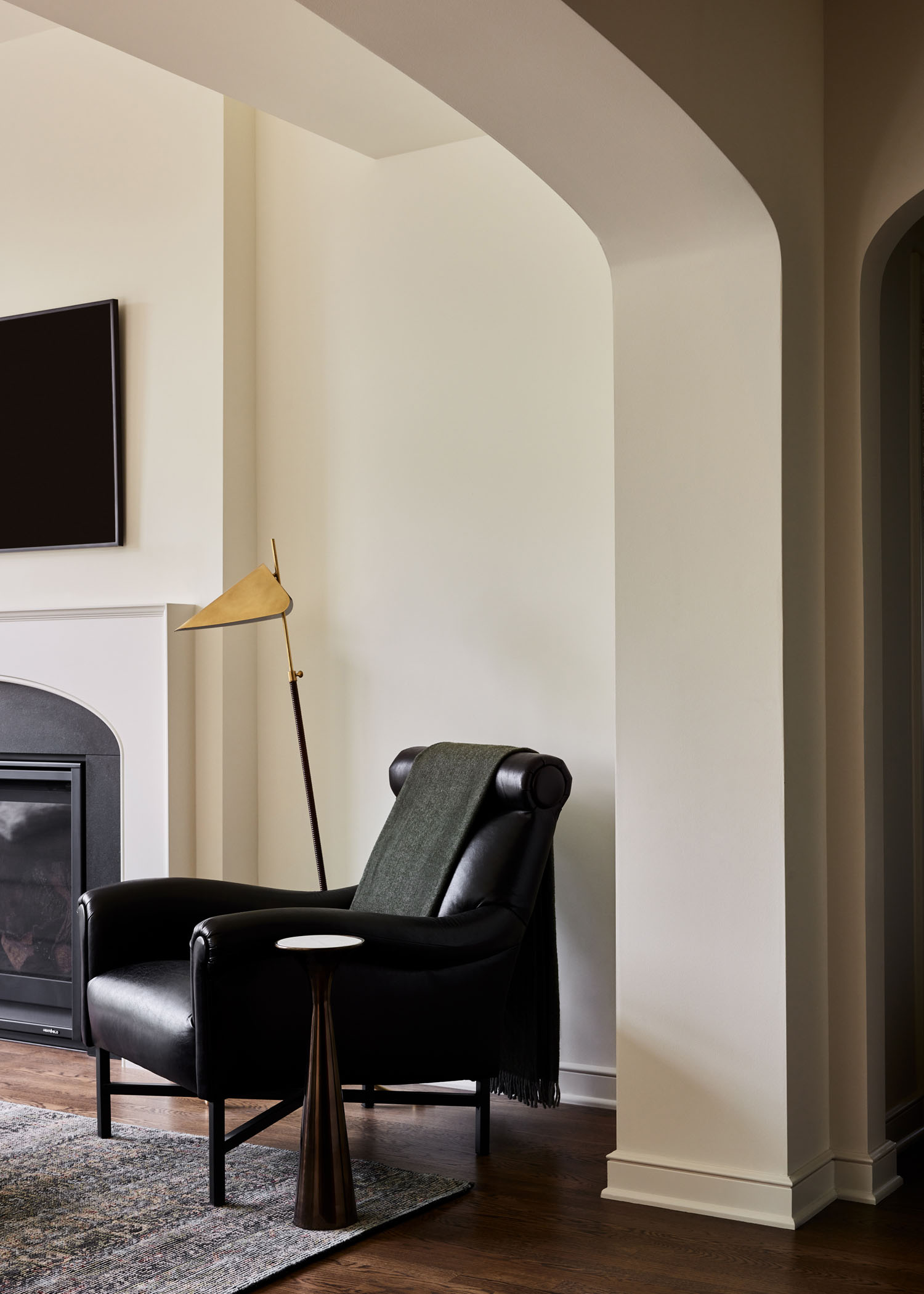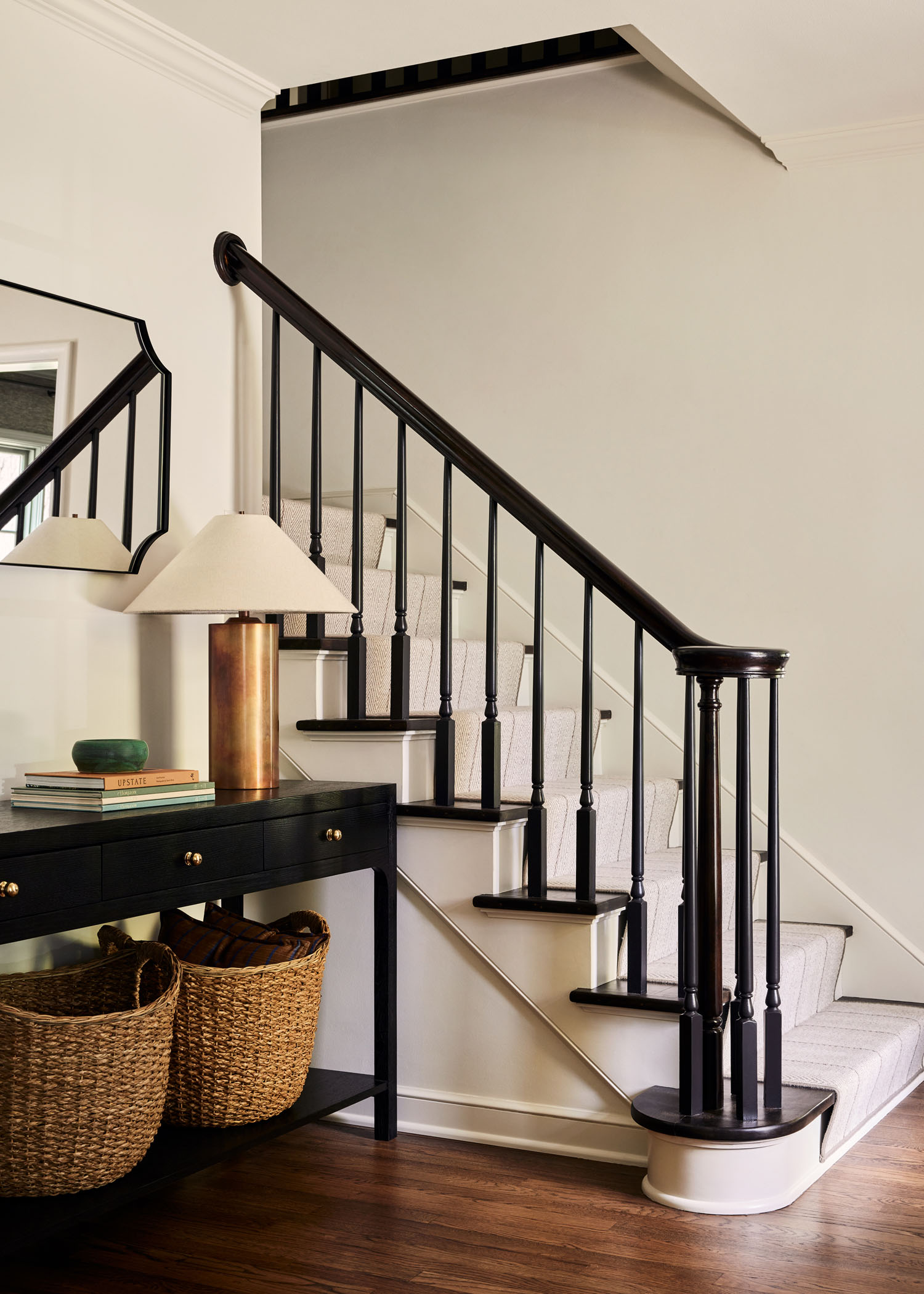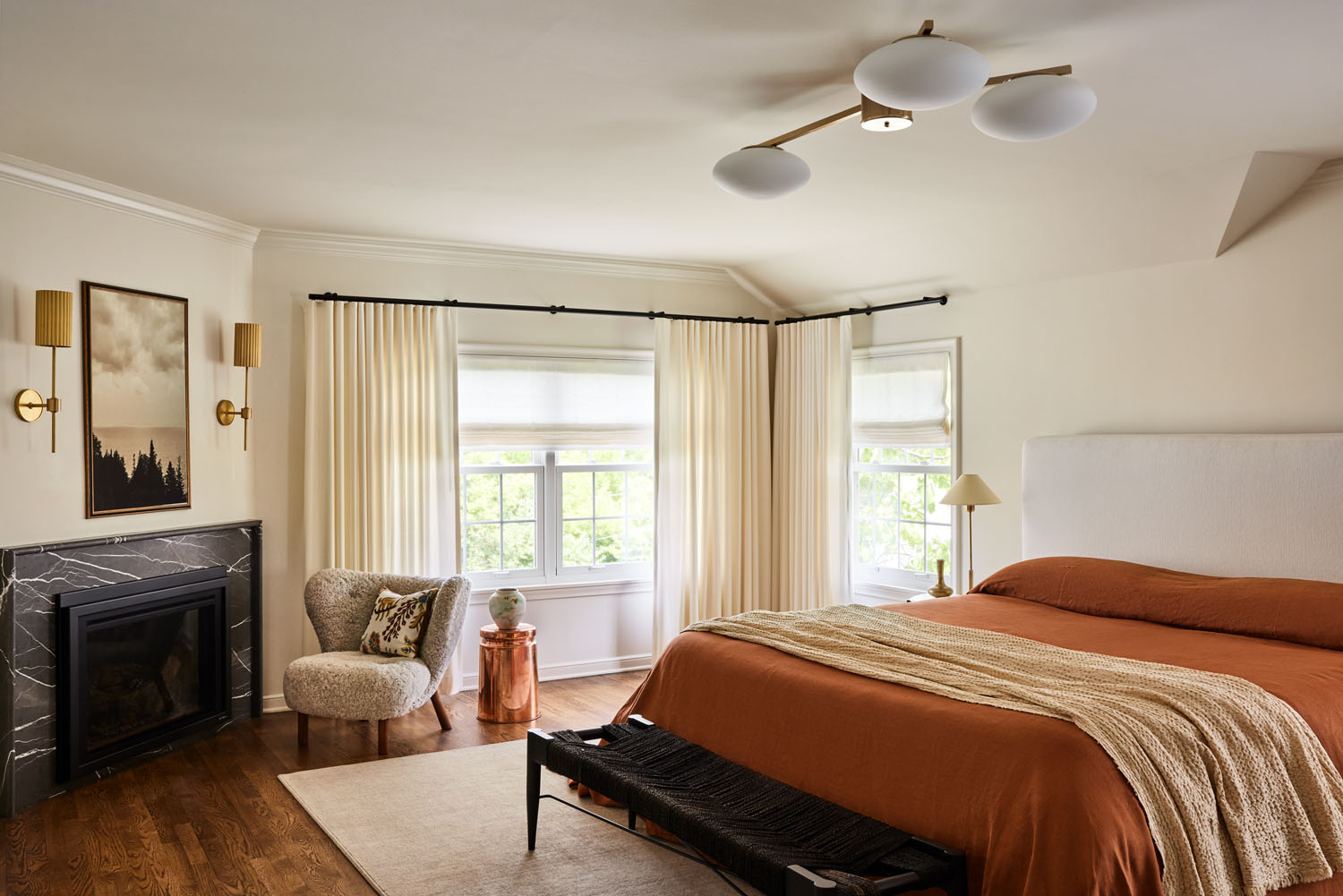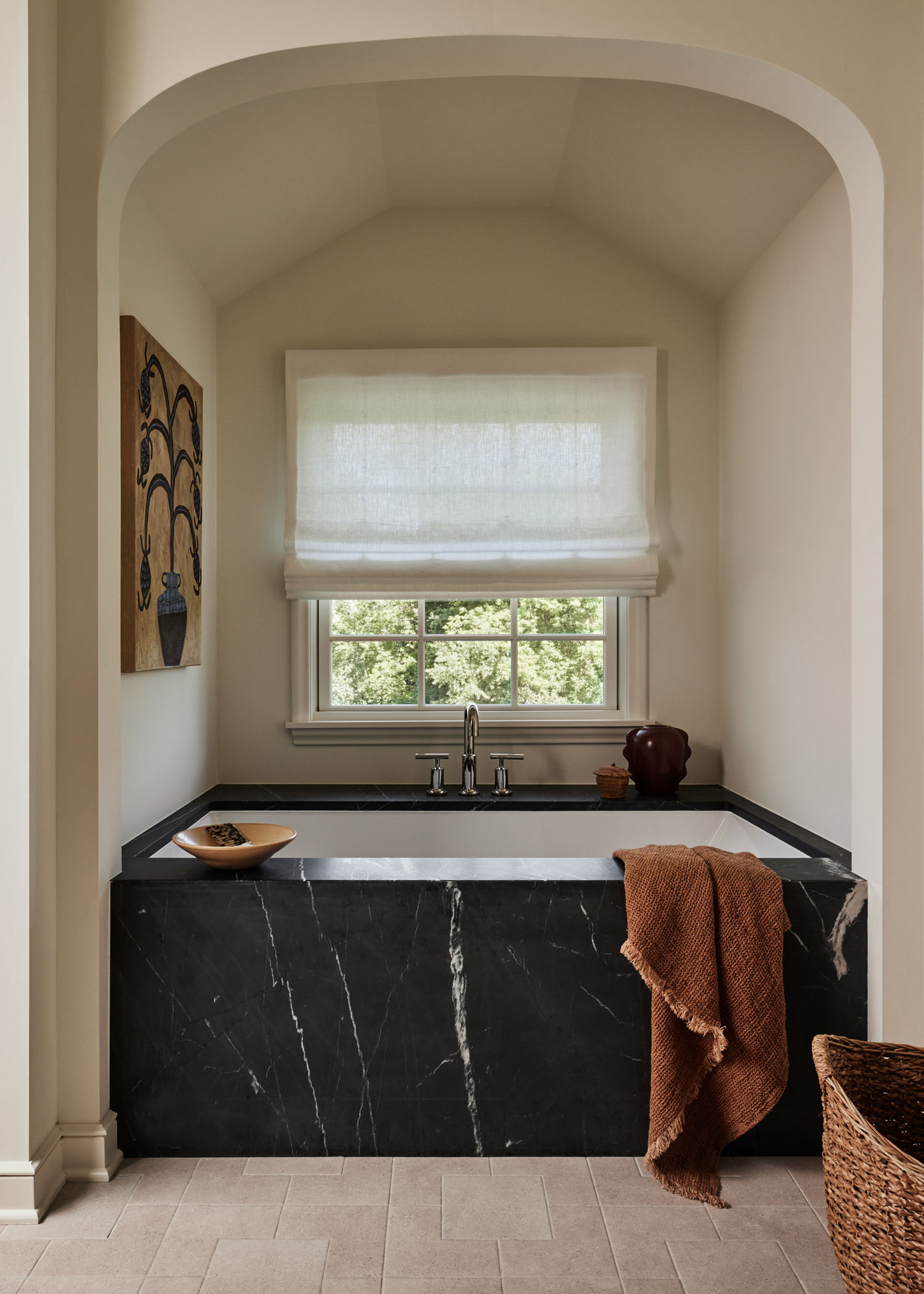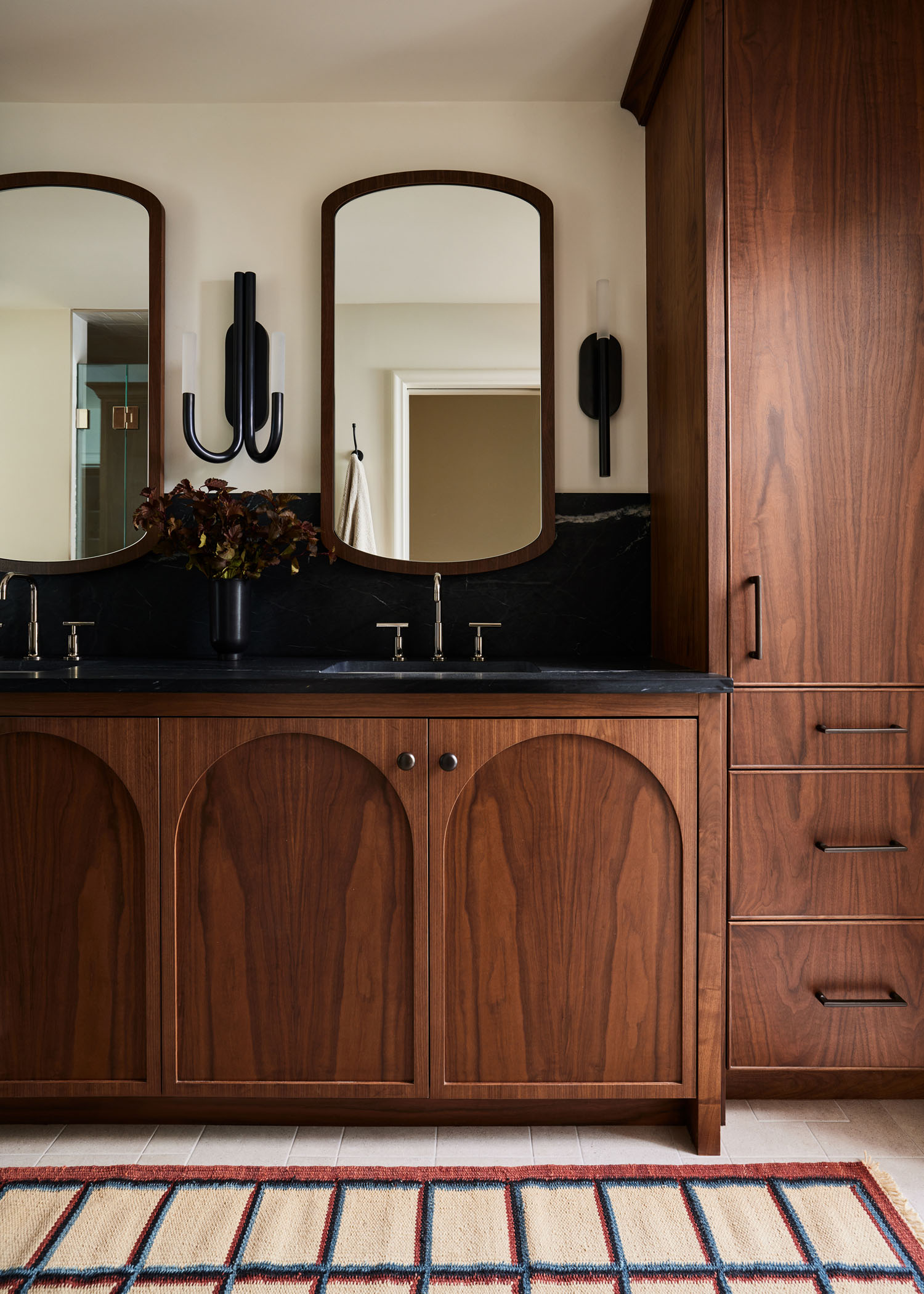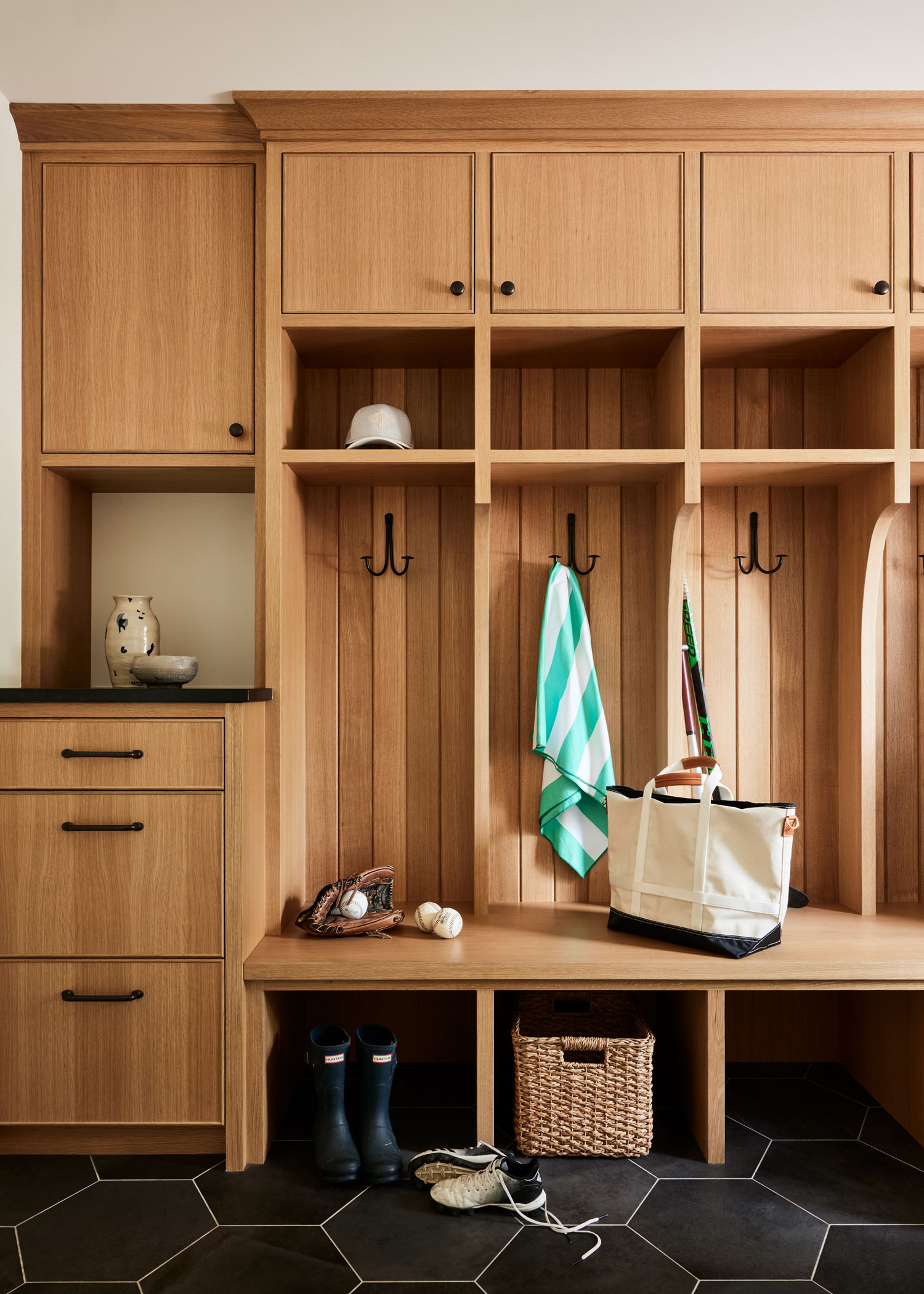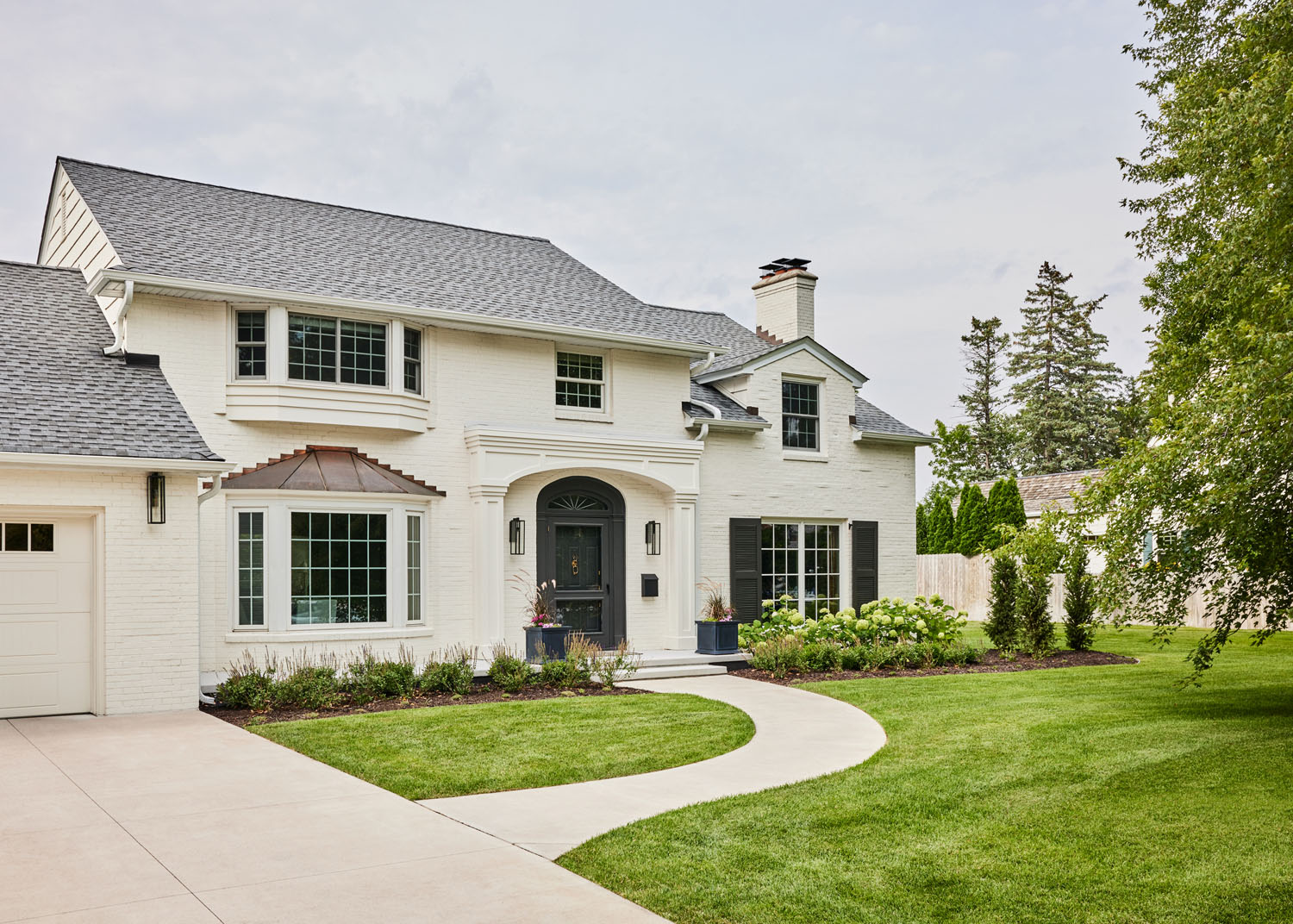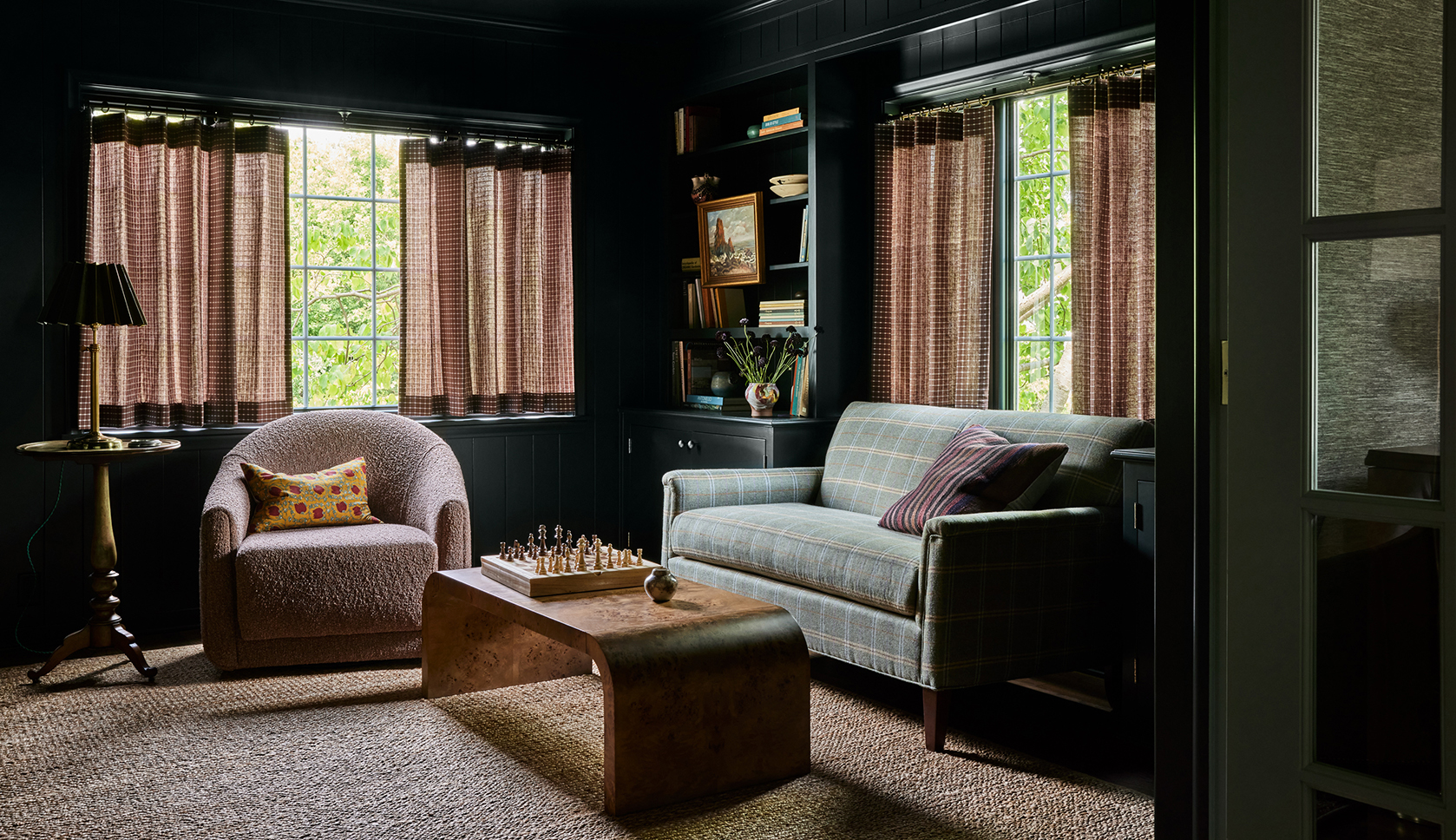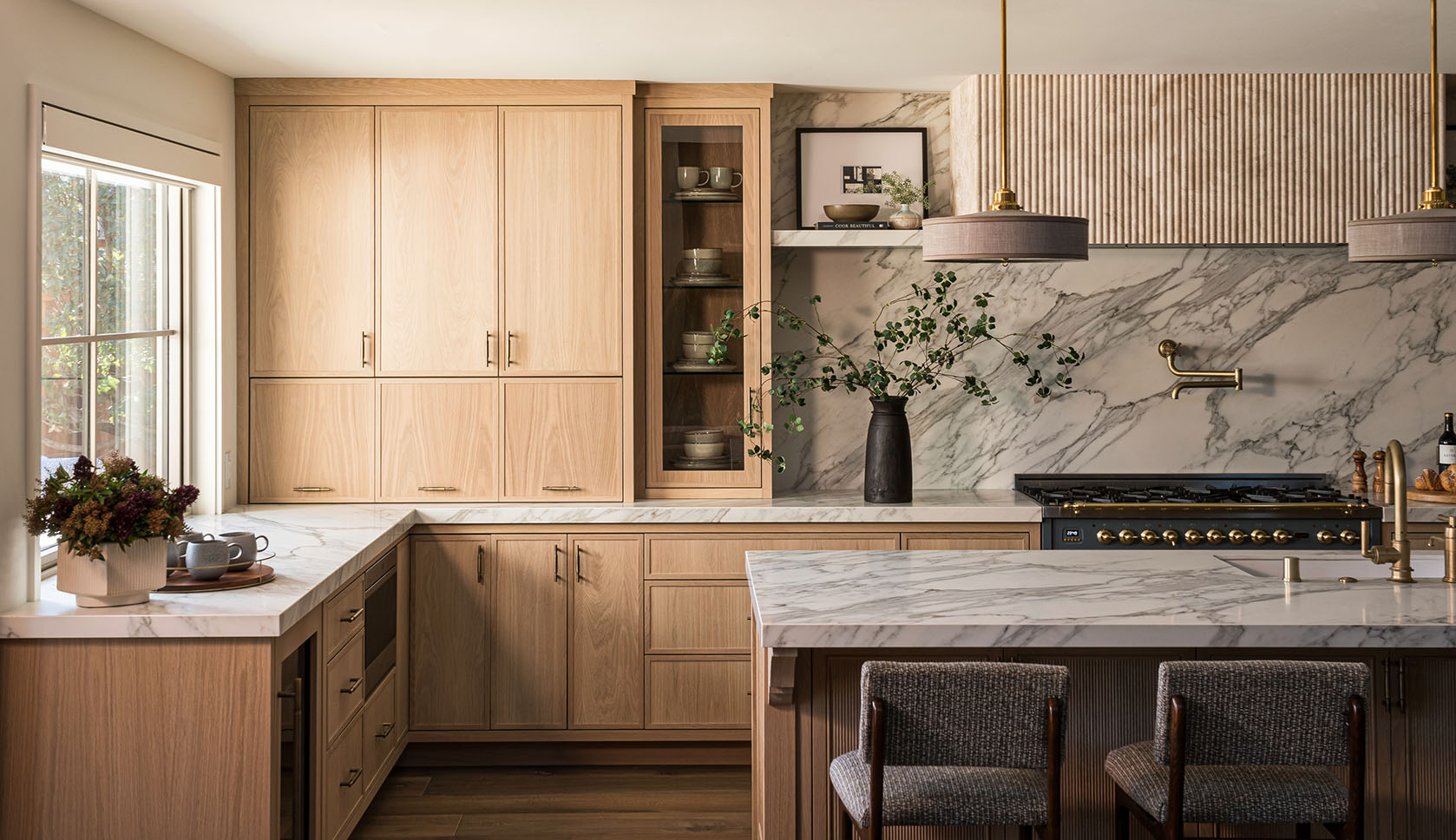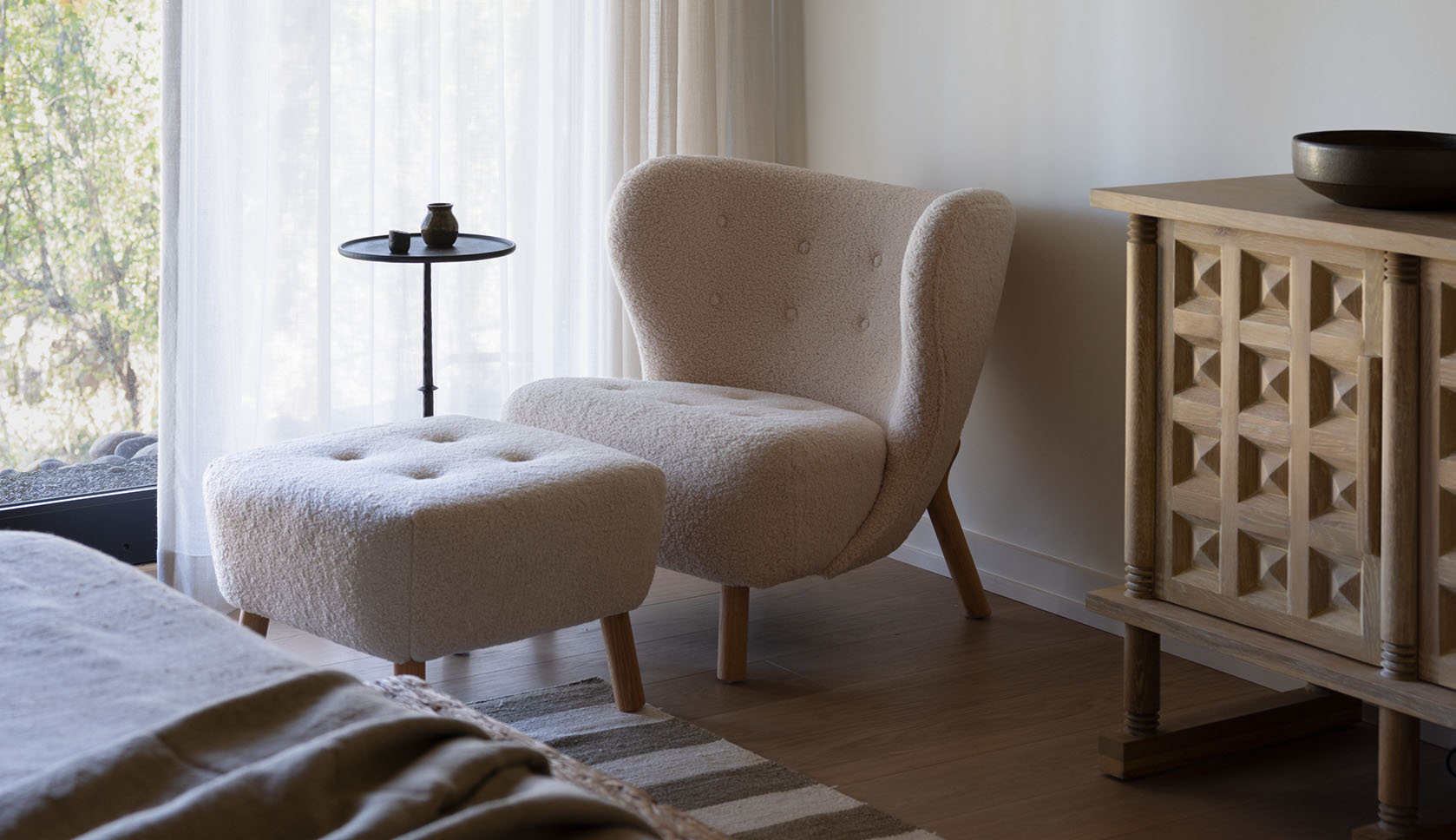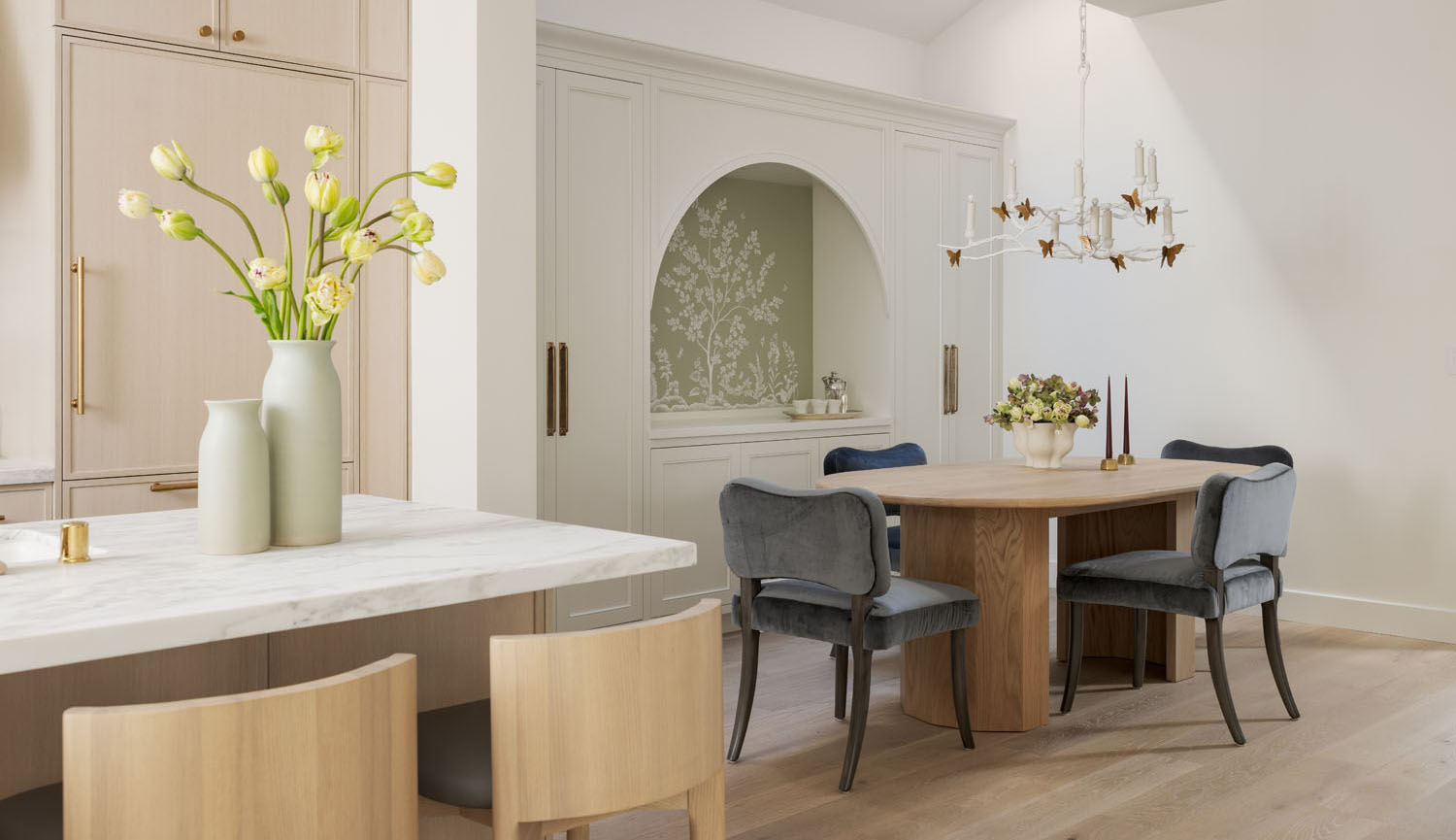Though it’s home to a young family with two school-aged boys, this Minnesota home was inspired by the concept of a Public House—cozy English pubs that serve as welcoming, comfortable community hubs. Understanding her clients’ needs, designer Victoria Sass of Prospect Refuge dissected the concept to best suit family living, studying how the cozy aesthetic would function for their day-to-day lives. It’s a lesson in balance and beauty.
Tell us about this home. Where is it located?
The house is located in the Sunnyslope neighborhood of Edina, Minnesota. Just west of Minneapolis, this 1950s suburban development now feels deeply connected to the urban environment and has developed into a charming mix of eclectic architectural styles. With winding roads, mature trees, and perfectly sized back yards, this is a family focused neighborhood full of older homes ready for their next chapter.
What can you tell us about your clients? What were their goals for their new home?
A family of four with two active school-aged boys, the homeowners came to us with the wish that their home feel like an open door to their new neighborhood. For conceptual inspiration we looked to English pubs, essentially serving as public entertaining spaces that feel inviting to friends and strangers alike—and the Public House concept was born. We studied color palettes, cabinetry details, and materials of these old, charming pubs then gently folded them into the design alongside a blend of contemporary and existing architectural details.
Style-wise, how did you bring that concept alive in the home?
Like many old homes, it’s the blend of styles that feel the most authentic to modern day living. We salvaged as much of the original colonial trims and architectural details as possible to retain a layered sense of charm and evolution, then blended in more contemporary elements such as rift sawn oak, contemporary lighting, and clean minimally trimmed archways. Of course, our work also references midwestern architectural vocabulary—the shape of the gently arched doorways is common to many homes in the city, the V-groove wall paneling in the den and brass fire screens all feel very familiar to those who know local architecture intimately.
How much change did the home’s original layout change?
As you enter the home, the classic foyer arrangement with the dining room to the left and living room to the right remained structurally unchanged. We painted and papered, updated lighting and hardware, but largely left this piece of the home intact. We did, however, forgo the expected living room arrangement of sofas and chairs for one large, central pool table…the spirit of which sets the tone for the fun-loving spirit of this young family and their love of games and entertainment.
Did this project have any challenges?
The owners were moving from a much more contemporary new build home in a different neighborhood, and there was a little adjusting to the needs (and aesthetic) of an older home. How to find that right balance between the old and the new, how to get the different styles to cooperate without competing, and how to learn to love some of the quirkier details that come with a home of a certain vintage. To bring all of the layers together in a way that felt organic we created threads—some common colors and materials weaving between rooms. Historic colors like mauve and green show up in different tones throughout, alongside crisp modern accents in black and white. A healthy mix of different wood stains and species dot each room, elevating the effect of a home evolving over decades.
How long did the project take, and what did the client say when they saw the finished space?
The project took about a year from our first interview to move in day. In true Public House fashion, the homeowners threw a party at their newly finished home for the design and build teams to celebrate. It was such a gracious, heartwarming gesture.
